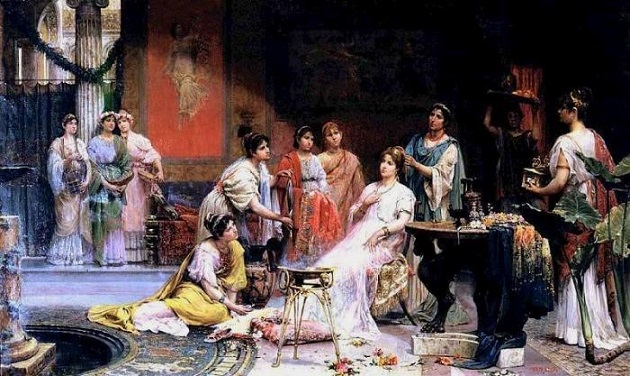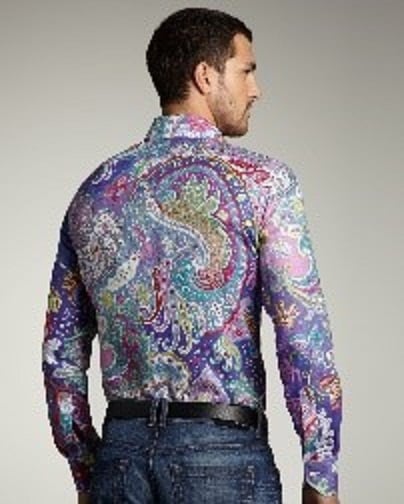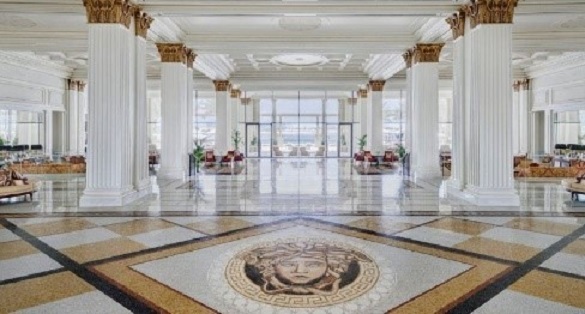Italy is at the head of the line in the highly competitive field of luxury having birthed most current and contemporary coveted brands and designers. The Italians are credited with shaping, forming, promoting, and then seducing us to purchase their luxury goods and services. Italian production and craftsmanship are respected as among the highest standards in the fashion/furnishing/services sector and the “Made in Italy” trademark is a global reference for quality and distinction.
Luxury Is

Luxury, by definition, equals LUST, originating from the Latin words LUXURIA (excess), and LUXUS (extravagance), becoming LUXURE in French. In Elizabethan times, the idea of luxury was associated with adultery, morphing to mean opulence or splendor.
In earlier centuries, luxury was about craftsmanship and owning stuff not readily available to others. Some of this has changed with the rise of mass production, the globalization of business, and worldwide access to just about anything and everything.
Not All Luxury is Created Equal

What EXACTLY is luxury and what makes Italian luxury brands stand head and stiletto heels above other countries and brands when it comes to ideas, designs, execution, purchase and use? Is it the quality of the materials? The design? The price? The availability or scarcity of the brand?
In The Beginning

The concept of luxury starts with the idea of exclusivity, the knowledge and/or feeling that not everyone will have access to the product/ experience that the brand is selling. Where do these ideas come from? Usually, they are sparked through the prism of quality, comfort, elegance and evolve as consumers around the world seek to acquire (and frequently collect) goods identified as luxury.
Combination of Events
What is luxury today is different than what it was decades ago. Research has determined that globalization, the Internet, digital technology, and life experiences have expanded the perception of quality and exclusivity, currently defined by aspirations and lifestyles that have morphed through the decades.
Research also finds that high-end consumers of luxury acquire brands/products/services in order to differentiate themselves from others; however, contemporary luxury purchases are not necessarily or entirely based on price, and bragging rights may not focus on money as a “stand alone.” When queried on their motivation to buy, some affluent buyers did not think the most worthwhile travel experiences were the most expensive; their idea of luxurious travel included attributes/dimensions beyond (or beside) price. Luxury hotel brands who target the luxury consumer find that their guests value diversity, inclusivity, creativity and openness – seeking a sense of purpose supported by the brand.
Self-Actualization
The shift is from external to internal satisfaction. High earners (HENRY – high income not rich yet) are looking for experiences that help them learn, differentiate themselves, express who they are, and have a purpose beyond pampering and comfort. Luxury is moving from acquisition or places to visit, to more about who they want to be and/or become.
Luxury. The Italian Way
Italian companies designing and producing luxury goods lead the world. Italy ranks fourth in the personal luxury goods market, following the US, China and Japan. The Milan-based Altagamma Foundation (2020 report), determined that the luxury goods industry is worth approximately 115 billion Euros (US$ 130.3 billion). The “Made in Italy” label was worth US$2,110 billion (2019) according to the annual report produced by Brand Finance, making Italy 10th in the world for most successful and profitable national brand value. In Italy, the fashion industry alone is valued at almost US$ 20 billion and Italy is the international leader in the leather sector (since 1500s) representing 65 percent of European leather production, and 22 percent of the world production.
Italian manufacturers supporting Italy’s largest luxury brands (i.e., Gucci, Prada and Giorgio Armani) were forced to close because of the pandemic and orders dropped globally. This situation has been complicated by delays in government payments of state social security, and government backed loans, risking the production of 40 percent of global luxury goods.
We should not be surprised to learn that many iconic Italian brands are no longer controlled by the Italians. The Area Study of Mediobanca annual reports that as many as 40 percent of the main Italian fashion brands are owned by foreign enterprises. Of the 163 companies that count yearly revenues of excess of US$ 100 million, 66 belong to foreign firms, 26 belong to French investors, 6 to British, 6 to Americans and 6 to Swiss companies.
Versace was sold to Michael Kors, Gucci, Bottega Veneta, and Pomellato belong to the French group Kering; Pucci, Fendi, and Bulgari, belong to the French LVMH group; Giorgio Armani, Dolce & Gabbana, OVS, Benetton, Max Mara, Salvatore Ferragamo, and Prada continue to be the most profitable companies that remain under direct Italian ownership.

Etro recently sold a 60 percent stake to LVMH-controlled private equity group L Catterton and will soon be led by a new CEO, Fabrizio Cardinali, currently chief operating officer of Dolce & Gabbana. The Etro family has become a minority shareholder and the future for this brand, known for its paisley textiles, is uncertain. Some luxury brands continue to rely on China (exclusively), and this may be a mistake.
In December 2015, Fendi expanded its reach and opened Private Suites, a hotel with 7 rooms. This project is part of an evolutionary process for this iconic company which started as a handbag, and fur shop in Rome in 1925, and now provides clothing for men, women, and children from head to toe. The brand is also found on timepieces, and well as a Casa line of home furnishings, and accessories.

Palazzo Versace was introduced on Australia’s Gold Coast (2000) and promoted as “the world’s first fashion -branded hotel.” This may not be factually correct as the Ferragamo family (properties in Florence, Rome and Tuscan countryside) has been operational for over 20-years. The Armani Hotel Dubai opened in 2010 in Burj Khalifa, the tallest building on the planet. In 2011, Armani opened a Milan location that dominates an entire city block. Bulgari opened a hotel in 2004 and the Italian jeweler expanded to London and Bali with plans to open properties in Shanghai, Beijing and Dubai. It is interesting to note that expanding a brand is not always successful; the Hotel Missoni Edinburgh and Maison Moschino in Milan opened in 2009 and 2010, closing in 2014 and 2015.
What To Do
The Italian economic system is based on 93-94 percent small to medium size corporations. In 2019 the Italian fashion industry was worth 1.3 percent of the entire national GDP and the growth has been in spite of other economic challenges in the country. An increase in international promotions of Italy as a tourist destination and the nucleus of luxury manufacturing would help jump-start the economy as products “Made in Italy” comprise up to 60 percent of total tourism spend.
Italian fashion brands are attempting to expand markets, promoting the brands as “global” in Asia, the US and Europe. Family-owned brands that are still independent are looking for investors in order to compete and grow. Private equity investors, acknowledging the enduring value of Italian design and manufacturing, are looking for new opportunities. It is likely that made-to-order for selected clients will recover faster than general luxury for greater spending requires a psychological adjustment.
Digital enhancement is another opportunity for brands seeking survival and growth but it is not a slam/dunk as the luxury brands will have to give up its certainties, comfort zones and business model along with its lack of interest in innovation, penchant for ivory towers, and secret gardens, male-focused business model and the rigid approach of those who have won trophies in the past. The technology path is about the need to multitask, encourage and promote different points of view, while integrating online and offline businesses.
Directing Italian Luxury

If you are small to medium sized Italian business and interested in breaking into the USA market, the one-stop shop is the Italian Trade Agency (ITA) working in cooperation with the Ministry of Foreign Affairs and Economic Development. Headquartered in Rome, one of its many roles is to secure Foreign Direct Investment in Italy and to heighten/strengthen awareness of Italian businesses and its regulatory environment. The agency started in 1926 and may be the oldest government department in charge of promoting economic trade.

Sometimes Italian entrepreneurs ignore the US marketplace because it is dominated by large Italian brands and it may be challenging to find joint venture partners so ITA facilitates meetings both virtually and in-person. Most recently, ITA, (funded in part by a grant form the Italian Government), launched a web platform known as EXTRAITASTYLE(Extraordinary Italian Style) with the objective of assisting Italian entrepreneurs grow their USA presence.
ITA also offers training courses for companies new to international platforms including Amazon, Alibaba and WeChat. In addition, the agency supports distribution through department stores for products that range from fashion to food.

Directing the operation in New York since 2019 is Antonino Laspina. When I recently met with him in his Manhattan office (surrounded by awesome Italian leather furniture and fixtures) it was clear that Laspina is very comfortable representing Italian luxury products. Born in Sicily, he graduated with honors in political science, foreign trade, and export management. He also studied diplomacy at the Italian Society for International Organizations (SIOI). He joined the Italian Trade Agency in 1981 and has been posted to Asia, including Seoul, Kuala Lumpur, Taipei, and Beijing.
In 2007, Laspina was named one of the “10 Greatest International Friends of Chinese Fashion” by the organization committee of China Fashion Week. This outstanding achievement was quickly followed by the development of Prospero Intorcetta Foundation, to which he was elected president. The foundation is dedicated to the Sicilian Jesuit who lived in China in the 17th century and translated many pieces of Confucius’ work into Latin for the first time. In 2008, Laspina became a member of the Board of Directors of the University of Kore, Enna, Italy
Since 2015, Laspina has focused on the innovation of on-demand services for international business development including marketing, and training. He is a member of the Young Leaders’ Group (Italy-United States Council (1998).
For additional information: ice.it, extraitastyle.com, italist.com/us.
WHAT TO TAKE AWAY FROM THIS ARTICLE:
- In Italy, the fashion industry alone is valued at almost US$ 20 billion and Italy is the international leader in the leather sector (since 1500s) representing 65 percent of European leather production, and 22 percent of the world production.
- Italian production and craftsmanship are respected as among the highest standards in the fashion/furnishing/services sector and the “Made in Italy” trademark is a global reference for quality and distinction.
- The concept of luxury starts with the idea of exclusivity, the knowledge and/or feeling that not everyone will have access to the product/ experience that the brand is selling.




![China's Hyperloop Train: A Glimpse into the Future of Transportation 10 Travel Tourism News | Domestic & International Hyperloop Train China [Photo: Hyperloop Transportation Technologies]](/cdn-cgi/image/width=145,height=100,fit=crop,quality=80,format=auto,onerror=redirect,metadata=none/wp-content/uploads/2024/02/180720163348-hyperlooptt-china-capsule.jpg)


















